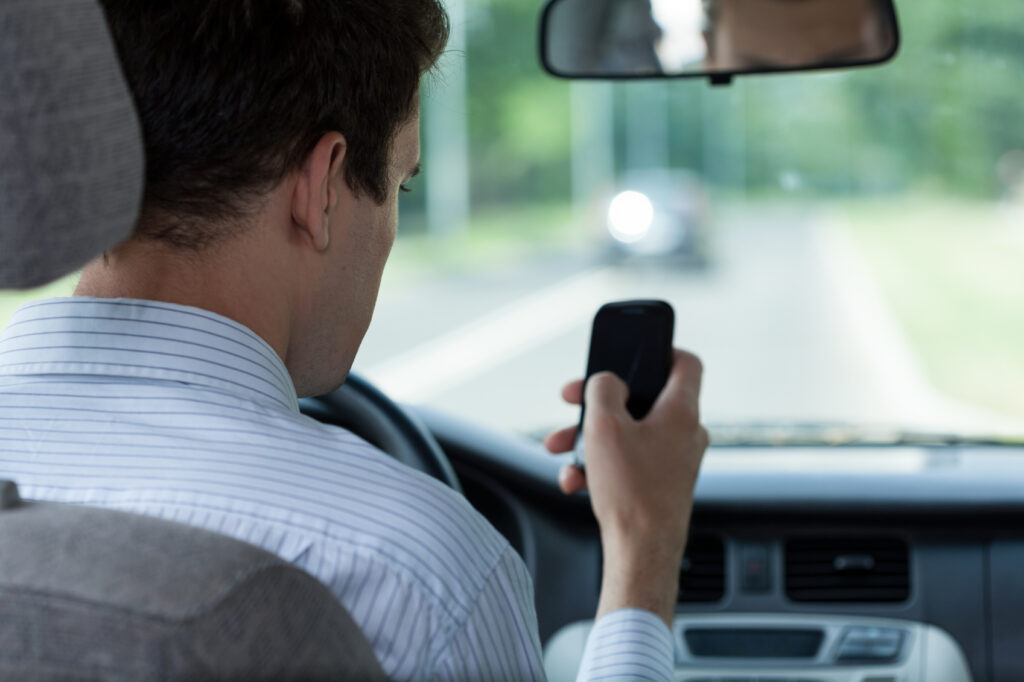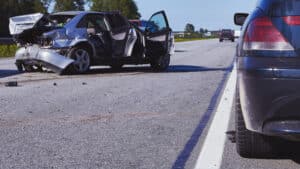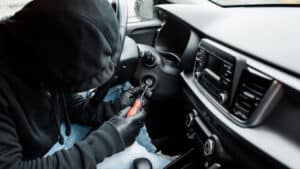
Ashley from Rockridge asks: “Chris, last week I used the casual car pool to commute into the City. While moving slowly through the Bay Bridge maze, the driver took out his smartphone and typed in an address on a map application to get directions to a business. He then called the business holding the phone to his ear. I voiced my concern over his lack of attention to other cars in the maze. He didn’t take kindly to me expressing an opinion on the safety of his driving and claimed the law only prohibits texting while driving. Is that right?”
Ashley, the answer to your question is “no.”
Before discussing California law, even if what the driver did was legal, you were correct to voice your concerns. Distracted driving constitutes a serious, nationwide public safety issue. In 2013, 3,154 people, or nearly 10% of all people that died in vehicle crashes in the U.S. that year, were killed in crashes involving a distracted driver according to the National Center for Statistics and Analysis. The same year, 424,000 people were injured in motor vehicle crashes involving a distracted driver, an almost 10% increase since 2011.
While everyone acknowledges the importance of attentive driving, most of us do not appreciate how dangerous it can be to take your eye off the road for even a few seconds. It takes 4.6 seconds to read or type the average text message. The California Office of Traffic Safety reports that just three seconds of driving at 65 mph is far enough to travel 100 yards, or the length of a football field. Most crashes happen with less than 2 seconds of reaction time.
Using a hands-free device such as the speakerphone, an earpiece or ear buds, or the car’s communications system, does not make driving safe. In fact, research shows that headset mobile phone use while driving is not substantially safer than hand-held use. When you are driving you need to have your eyes on the road, hands on wheel, and mind on driving. It’s a myth that drivers can multi-task well. There is no safe way to make a call while driving.
Turning back to your experience Ashley, three statutes in California govern mobile phone use while driving. First, no driver may write, send, or read text messages while behind the wheel. (Vehicle Code Section 23123.5.) The law creates an exception for devices that are “specifically designed and configured to allow voice-operated and hands-free operation to dictate, send, or listen to a text-based communication, and it is used in that manner while driving.” First responders are also given an exemption.
Second, California drivers may not use a mobile phone while driving unless the phone is “specifically designed and configured to allow hands-free listening and talking, and is used in that manner driving” or used to make an emergency call to police, fire, or health care provider. (Vehicle Code Section 23123.) Finally, drivers under the age of 18 years, may not drive while using a mobile phone even it if is equipped with a hand-free service. (Vehicle Code Section 23124.)
Texting under the law requires communicating with another person using a text message, instant message, or electronic mail. Entering a number or name into a mobile device for the purpose of making or receiving a telephone is not considered texting. Thus, by accessing and using his map application, the driver’s conduct arguably did not violate the prohibition on texting.
Nor on the basis of a 2014 California appellate decision, People v. Spriggs, 224 Cal. App. 4th 150, did the driver violate Vehicle Code section 23123 by looking at the map. In Spriggs, the driver pulled out his smartphone to check a map application while stopped in heavy traffic and received a ticket for violating section 23123. The Court overturned the citation holding that section 23123 “does not prohibit all hand-held uses of a wireless telephone. Instead, it prohibits ‘listening and talking’ on the wireless telephone unless the telephone is used in a hands-free mode.”
However, Ashley, the driver of the car in which you were a passenger violated section 23123 when he called the business and had a conversation, not using any hands-free device.
I wish to reiterate, even if a particular use a mobile phone while driving is legal, such as accessing an application, it’s not worth it. Hundreds of thousands of serious injury crashes occur across America annually because drivers were distracted by phone calls, emails, texts, and increasingly social media and other applications on their mobile phones.
By attorney Christopher B. Dolan, owner of the Dolan Law Firm. Email Chris questions and topics for future articles to help@dolanlawfirm.com










